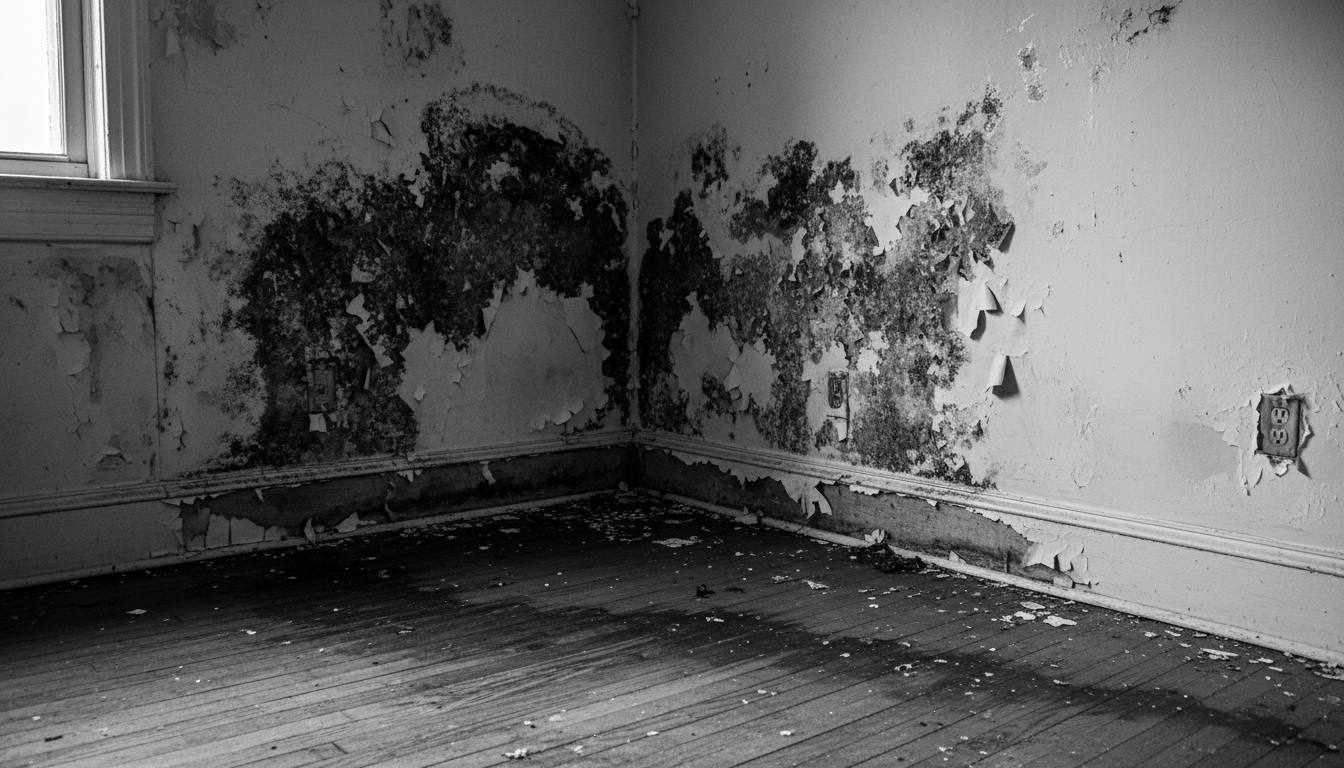Why Mold Is a Serious Threat After Sewage Overflows in Waretown?
Waretown, located near the Barnegat Bay, experiences frequent rainfall and a high water table—conditions that increase the likelihood of sewage backups and overflows. When this happens, the immediate cleanup often focuses on removing visible waste and drying surfaces. But beneath the surface, moisture and bacteria can linger in porous materials like wood, drywall, and insulation.
This trapped moisture becomes a breeding ground for mold. Add in organic waste from sewage and you have the perfect storm for harmful fungal growth. Mold doesn’t just damage your home—it poses significant health risks, especially when it results from contaminated water sources.
What Makes Sewage-Related Mold Growth More Dangerous?
Mold that grows after a sewage incident is classified as Category 3 or “black water” mold contamination. This isn’t your average bathroom mildew. It can contain dangerous bacteria, viruses, and toxins that affect both structural materials and air quality.
Key risks include:
- Mycotoxin exposure: Toxic compounds released by certain molds that can cause respiratory and neurological issues
- Airborne pathogens: Bacteria and viruses from sewage can become airborne as mold grows and spreads
- Weakened immune response: Children, seniors, and people with allergies or asthma are especially vulnerable
- Cross-contamination: Mold spores can easily spread through HVAC systems or attach to belongings
Cleaning surface water isn’t enough. If mold is allowed to fester after a sewage spill, the cost of remediation—and the risk to your health—rises dramatically.
Where Does Mold Commonly Grow After a Sewage Overflow?
After a sewage spill, mold can start growing within 24–48 hours in the following locations:
- Basement walls and floors: Especially if water enters through foundation cracks
- Crawl spaces: These often go unchecked but retain moisture for days or weeks
- Subflooring: Moisture trapped under tiles, carpet, or hardwood accelerates mold development
- Drywall and insulation: Highly absorbent and typically require removal after exposure
- HVAC systems: Mold spores can thrive in ducts if contaminated air is circulated
Waretown’s older homes and low-lying properties are especially prone to these issues. Even small overflows from toilets or floor drains can have long-lasting effects if not properly addressed.
How Can You Identify Mold Growth After a Sewage Incident?
In many cases, mold hides in areas you can’t see, making early detection difficult. Look for the following warning signs after any sewage spill:
- Persistent musty odor, especially near drains or in basements
- Staining on walls, ceilings, or flooring
- Increased allergy symptoms or respiratory irritation
- Visible black, green, or white fuzzy patches
- Soft or warped drywall and wood
Advanced testing is often needed to confirm mold presence, especially for toxic varieties. At Advanced Disaster Recovery Inc., we use moisture mapping and air quality testing to identify hidden threats.
Why Quick Response Matters After a Sewage Overflow?
The longer sewage and moisture are allowed to sit, the greater the damage. Within 72 hours, mold can spread beyond the initial affected area, potentially requiring full-floor or wall reconstruction. Quick action helps limit damage and protects your home and health.
Here’s why timing is crucial:
- Moisture becomes harder to remove as it penetrates deeper into materials
- Mold remediation becomes more expensive as colonies grow
- Airborne contamination spreads to unaffected areas
- Insurance claims may be denied if response is delayed
For Waretown homeowners, especially those near flood zones or aging septic systems, it’s vital to have a mold remediation plan in place before disaster strikes.
How Advanced Disaster Recovery Inc. Helps Waretown Homeowners?
Advanced Disaster Recovery Inc. offers professional mold remediation and sewage cleanup services designed specifically for Ocean County homes. Our licensed technicians understand the unique needs of Waretown homes and use EPA-approved methods to ensure full decontamination.
Our process includes:
- Emergency sewage cleanup and extraction
- Moisture detection and drying using industrial air movers and dehumidifiers
- HEPA-filtered mold containment and removal
- Air scrubbers and sanitization to restore safe indoor air quality
- Reconstruction services for walls, floors, and insulation that cannot be salvaged
We respond quickly, work directly with homeowners, and provide full documentation of our process. If you’re overwhelmed or unsure what to do next, we’ll guide you through every step.
Protect Your Waretown Home From Future Mold Problems
Mold after sewage overflow isn’t something to ignore or try to fix with DIY methods. Waretown residents can avoid long-term issues by scheduling professional inspections, maintaining plumbing systems, and sealing entry points that allow water in.
If you suspect mold or have recently had a sewage event, don’t wait. Every day matters when dealing with contaminated moisture.
Advanced Disaster Recovery Inc. is ready 24/7 to help Waretown homeowners prevent and recover from mold damage. Call us today to schedule an inspection or emergency cleanup.

